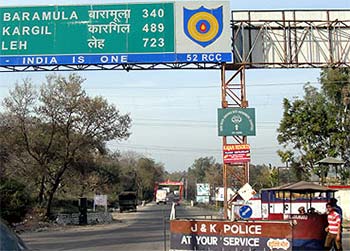Mohammad Ahseem
 This year on 21st of February the world will be observing 15th anniversary of world mother tongue day. The day proclaimed by UNESCO has been observed since 1999 to promote the linguistic and cultural diversity of the people of the world with the aim to counter the severe challenges faced by demographically small ethnolinguistic groups. The day, upheld by United Nations General Assembly through its resolution A/RES/61/266, dated 16th May, 2007 called upon all member states to “promote the preservation and protection of all languages used by peoples of the world”. February 21 is actually celebrated in honour of the students killed in Dhaka in 1952 when they were protesting for the recognition of their language Bangla as one of the two national languages of erstwhile Pakistan.
This year on 21st of February the world will be observing 15th anniversary of world mother tongue day. The day proclaimed by UNESCO has been observed since 1999 to promote the linguistic and cultural diversity of the people of the world with the aim to counter the severe challenges faced by demographically small ethnolinguistic groups. The day, upheld by United Nations General Assembly through its resolution A/RES/61/266, dated 16th May, 2007 called upon all member states to “promote the preservation and protection of all languages used by peoples of the world”. February 21 is actually celebrated in honour of the students killed in Dhaka in 1952 when they were protesting for the recognition of their language Bangla as one of the two national languages of erstwhile Pakistan.
Globalization, both as a consequence of and a means to improved interactions among the people of the world may have lead to improvement in economic opportunities in some cases, but simultaneously this has brought in small and poor indigenous socio-cultural and linguistic setups under tremendous strain. The cultural and linguistic outcome of such heightened interactions has taken many a small ethnolinguistic groups to the brink of extinction. According to linguistic anthropologists, in a situation of contact between two languages and/or cultures, for example between an indigenous language and culture and say English and its associated globalized culture, the former is always at loss because of the relatively higher prestige associated with latter. English of 21st century is a prestige language for most of non-native English world for the language is associated with the so called developed world and as such there is constant pressure on people to get associated with it. And all this happening at the cost of their own languages and cultures. This sort of situation is being created around the world by vested interests.
Another reason for the loss of linguistic diversity in a country like India is the forced Indianization of its people. In 1950, there were more than 500 indigenous tribal groups in India. These were unique with regard to their languages and socio-cultural setups. The setups were disturbed in the name of development by governmental agencies as well as Christian missionaries who had a free hand in tribal affairs before partition. For example promotion of tourism and the allied activities caused the demise of indigenous tribal groups in Andaman and Nicobar islands. The Chota Nagpur plateau in India was a land of numerous tribal groups most of whom have now become extinct, primarily because of coal mining in the area.
The state of Jammu and Kashmir presents a wonderful display of ethnolinguistic diversity. Apart from Kashmiri – the dominant ethnolinguistic group, the state is home to Pashtuns, Dards, Burushaskis, Kohistanis, Gujjars, Paharis, Baltis, Ladakhis, Dogras to name a few. These have been living in peace and harmony since centuries in the erstwhile princely state of Kashmir. The division of erstwhile Kashmir state into two parts, as a corollary to partition of India is gradually decreasing the ethnolinguistic vitality, a measure of the survival chances, of many of these groups. For example the Dards of Gurez and Drass speak Shina, the centre of which is GIlgit in Gilgit-Baltistan province of Pakistan. The Line of Control (LOC) has created a ‘disconnect’ between these Shina speaking Gurezis and Drassis with their cultural centre Gilgit. A recent study has suggested that the vitality of Gurezis is decreasing at a fast rate. Same is the case with Burshos of Makhduum Saheb locality which affiliates themselves with the Burushos of Hunza, Nagar and Yasin in Gilgit-Baltistan province. Given the nature of Kashmir issue, these have been concerted efforts to alter the linguistic nature of the state, the reflection of which is quite manifest in Chenab valley. Ethnic Kashmiris of Doda and Bhaderwah belonging to a particular religion surprisingly register their language as Hindi. This is indicative of the linguistic exploitation being carried under the garb of ultra nationalism. Hindi as mother tongue was spoken by around 42,000 people in J&K in 1972 and alarmingly this has reached to more than 1.8 million in 2001. Such a tremendous increase in mother tongue speakers of Hindi in is reflective of the linguistic games that are being played in Jammu and Kashmir. February 21 carries the message of linguistic and cultural freedom that men of all parts of the world should be free to enjoy.














